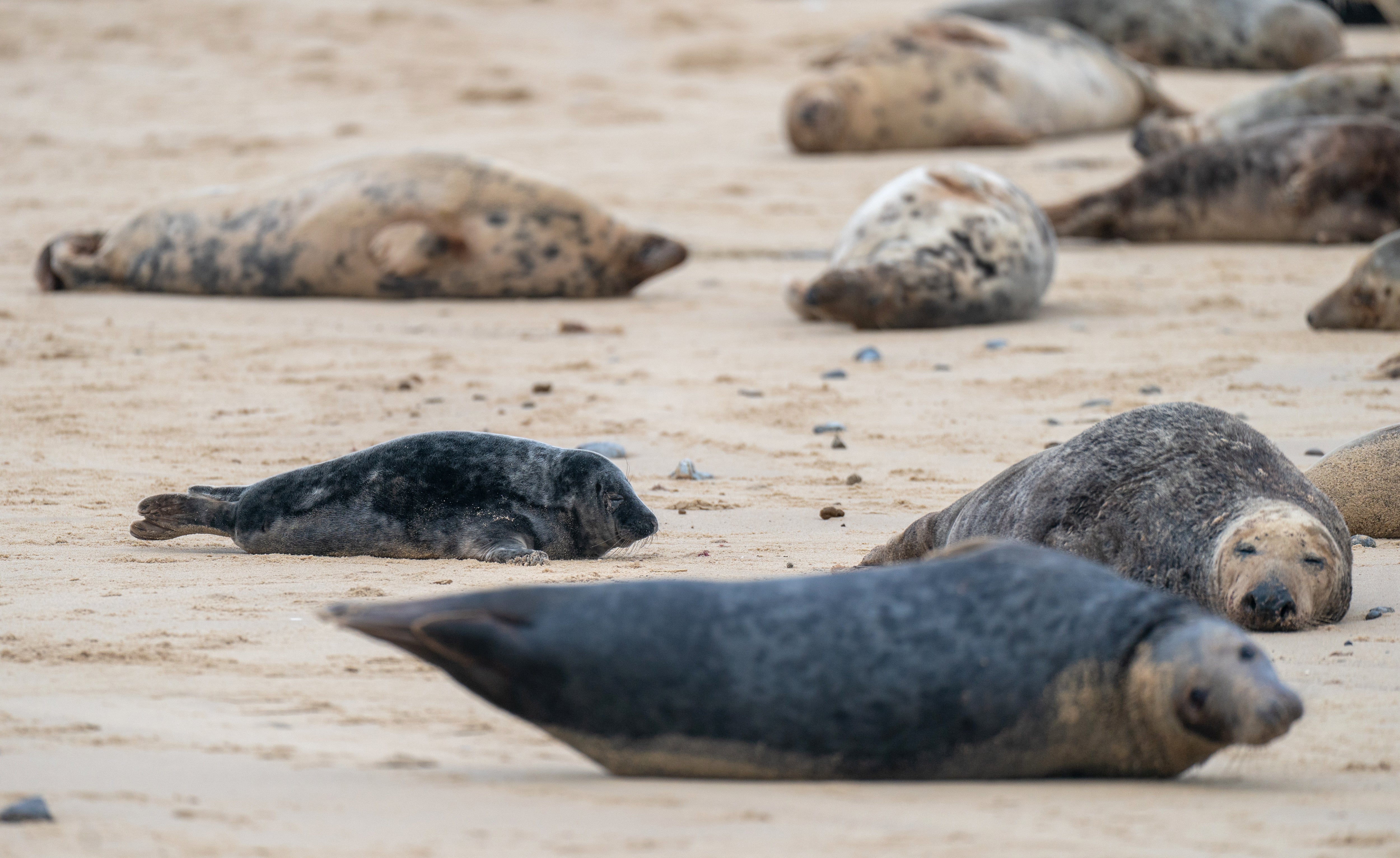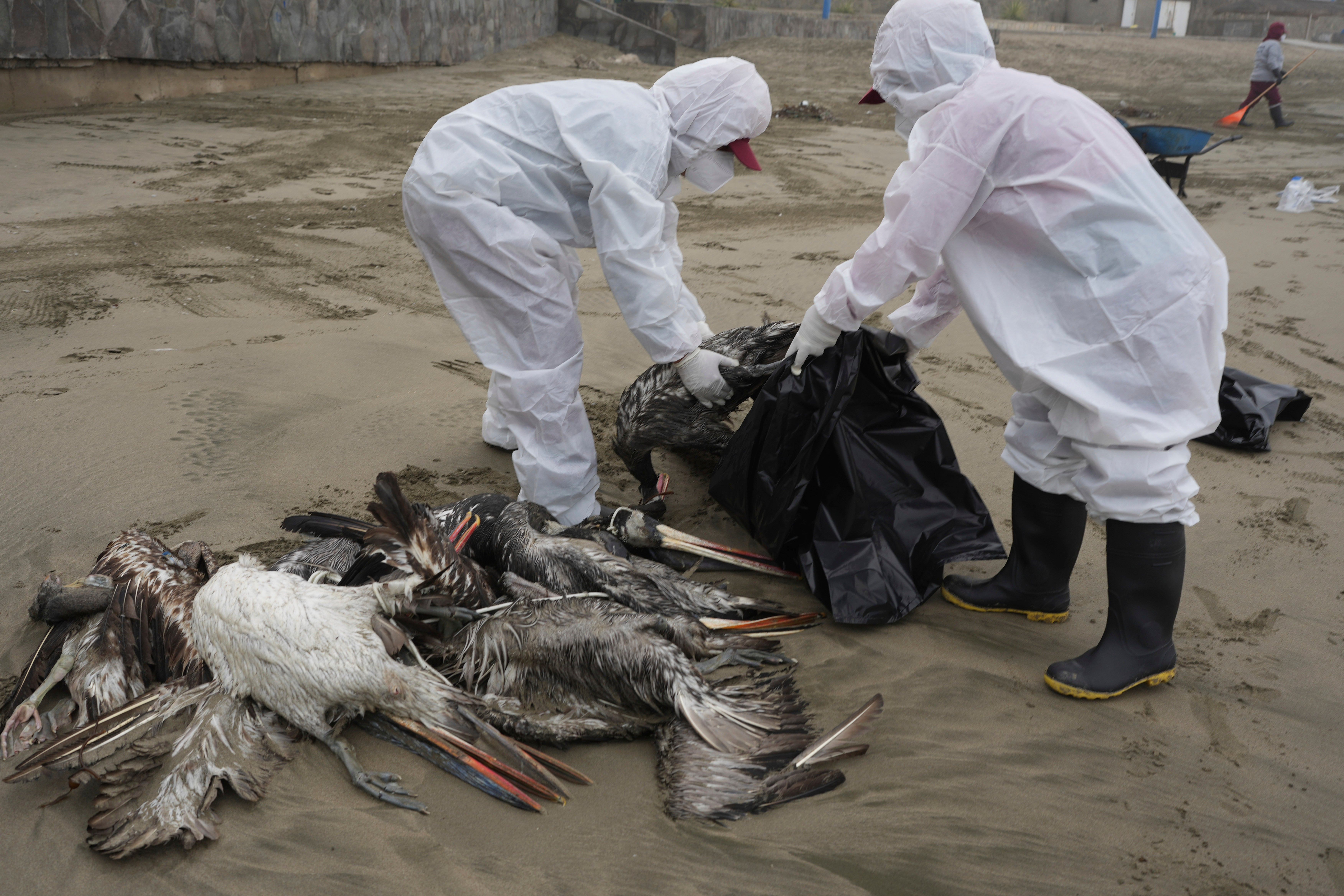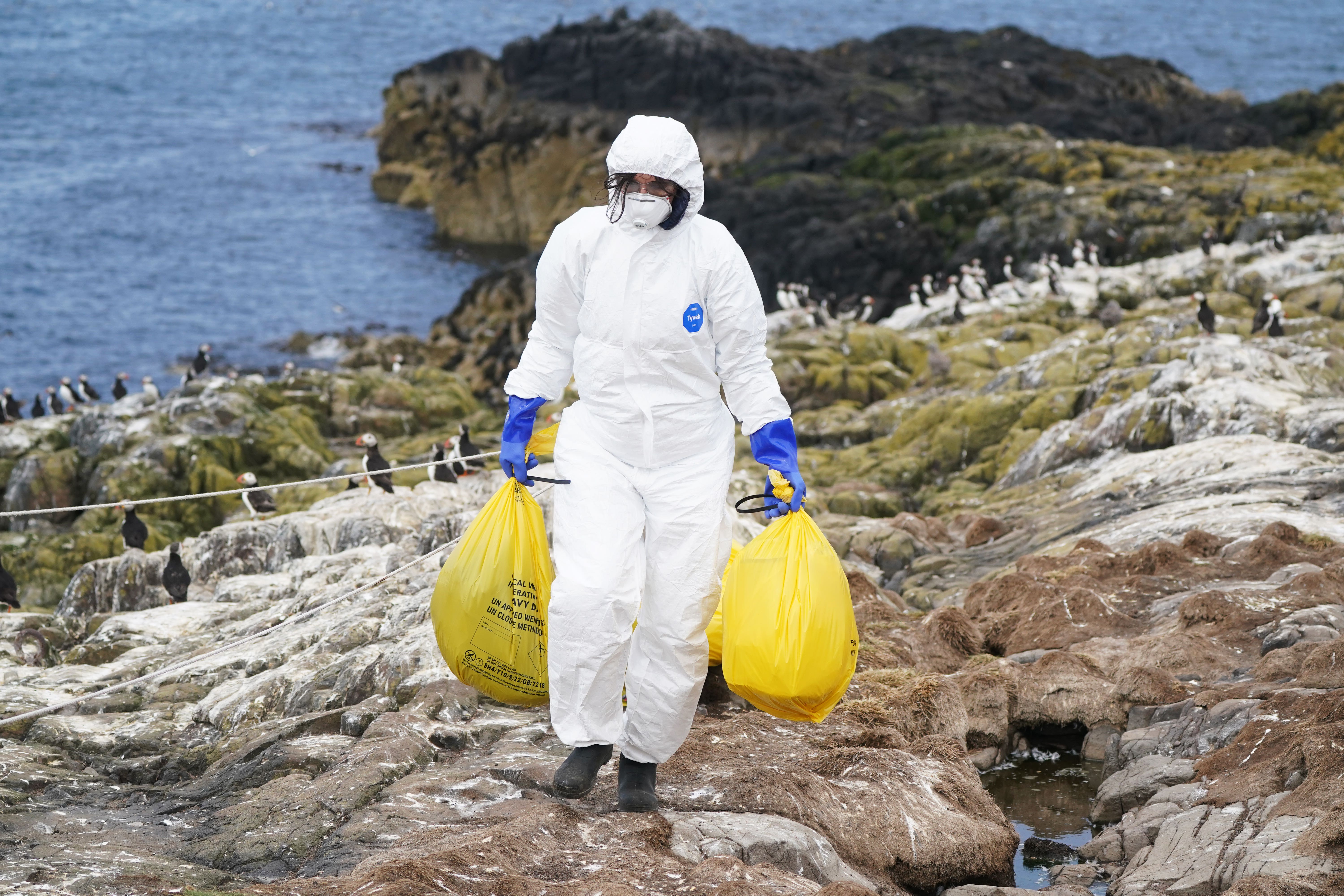Bird flu found in dead seals on UK beach as public urged to stay away from animal corpses
The five seal carcasses were discovered on a beach in Cornwall

Bird flu has been found in the carcasses of five dead seals on a beach in Cornwall.
The Cornwall Wildlife Trust urged members of the public to stay away from all dead animals which wash up on beaches including seals, dolphins, porpoises, whales and sea birds. There has also been cases of Bird Flu in a dolphin in Devon, the Trust said on its website.
“The general public are advised against approaching and interacting with seals in the UK, even when the animals are in danger or distress,” a statement from the trust said.
“Cornwall Wildlife Trust are also urging all members of the public to stay away from all dead animals, which wash into our beaches, including seals, dolphins, porpoises, whales and, of course, sea birds.”
“Cornwall Wildlife Trust’s Marine Strandings Network (MSN) are, however, taking extra precautions within the project, which will sit alongside our high standards of health and safety.
“It is now mandatory for all volunteers attending strandings to wear face masks and wear protective eyewear in addition to their usual PPE (disposable gloves and full waterproofs which must be disinfected after use) and cleaning processes.”
Cornwall Wildlife Trust also urged members of the public to report all dead stranded animals to its hotline.
The UK is home to 38% of the entire world’s population of grey seals, and 30% of the European subspecies of common seals, according to Cornwall Wildlife Trust.
The Trust clarified that there have never been reports of Bird Flu transmitting from seals to humans, or vice versa, in the UK.
Bird flu was identified in commercial poultry in Norfolk in January. A highly infectious H5N1 strain of the disease was found at premises near Fakenham, north Norfolk.
In November last year, between 30,000 and 50,000 birds are likely to have died outbreak of avian flu on the Farne Islands off the Northumberland coast, according to the National Trust.
The outbreak was described as an “unprecedented wildlife tragedy”.

It comes after the UK Health Security Agency shared details of its plan to act in the event that bird flu became a Covid-style pandemic.
In February, the UK Health Security Agency (UKHSA) said it found cases of bird flu in 145 premises and 656 wild birds in England, which is a rise of 15 new premises and 209 cases since December 2022.
Meanwhile, in Northern Ireland around 28,000 birds were culled in December 2021 after a suspected outbreak.
While there is no evidence H5N1 virus is an imminent threat or can spread between people, the experts have shared their plan to “prepare for the worst”.
The virus has only been found to spread to humans if they come into contact with sick birds but protections are stepping up after an 11-year-old girl died from H5N1 in Cambodia in February - with her father also testing positive.
It is believed the Spanish influenza pandemic of 1918, which killed approximately 50 million people, was first caused by transmission of an avian flu virus to humans.

Director of the Centre for Virus Research at Glasgow University, Professor Massimo Palmarini, said the initial strain adapted and then became endemic in humans, which in turn sparked the seasonal flu virus.
Professor Palmarini added that this is the reason it’s important to be aware of bird flu cases in humans and prevent it spreading and mutating as quickly as possible.
Japan culled a record number of chickens at poultry farms in 2022 as cases of highly infectious avian influenza surged across the country.
A record number of 56 infections of bird flu were confirmed across 23 of the country’s prefectures this season, according to Ministry of Agriculture, Forestry and Fisheries.
The culling of poultry rose to 9.98 million from the previous record of 9.87 million slaughtered between November 2020 and March 2021.






Join our commenting forum
Join thought-provoking conversations, follow other Independent readers and see their replies
Comments